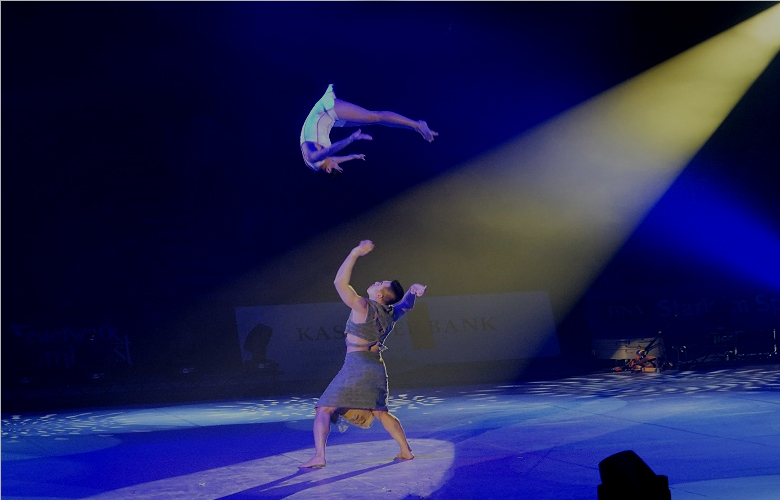
The Barani is one of the most misunderstood skills in sport found in, but not limited to, gymnastics, diving, trampolining, dancing, cheerleading, inline skating, snowboarding and many more.
It is used as an official move in gymnastics and tumbling. The 180-degree turn is carried out halfway through the forward somersault.
Most coaches understand the potential for obstacles if an athlete has been taught to twist one way forward and the other way backward. Linking skills becomes a nightmare and even breaking down the complexity and understanding becomes extremely difficult.
More often than I care to mention, I have been surprised by how many athletes I have worked with, who twist the opposite way when doing a Barani than they do when making a full twisting or more forward somersault.
It is neither a ½ twist-back somersault or a front somersault with ½ twist out.
It is a forward somersault with a ½ twist and if taught correctly, the athlete will begin twisting the opposite way, to the way they do a cartwheel or round-off on the floor.
The 1st quarter of the twist is really what we are focusing on. It is the preparation / set for forward twisting, regardless of how many twists are being performed.
For the following example, we will say the athlete twists left:
In gymnastics, the athlete would cartwheel/round-off starting with the left foot. As the left-hand touches the floor, the body would open up to the right. It is ¼ right turn to handstand and then ¼ right turn down to stand.
Many coaches and athletes would then take this round-off and basically build it up for the athlete to be able to do it in the air without the use of their hands. This is NOT a Barani and in gymnastics, we may call this an “Aerial” which is performed the same way as the roundoff from 1 leg.
If we break this skill down into two ¼ twists it will be clearer to see.
The first ¼ twist should happen after takeoff and be completed by the time the athlete is inverted. The second ¼ twist happens coming out of the inverted position. (it is this part that confuses a lot of people as to the way they are twisting). It is this first ¼ twist that is taught as a fundamental for progression towards twisting more that 180-degrees. If this ¼ twist is taught at the right timing during the somersault, then the athlete should then be able to pull in their arms and whilst keeping the body as straight as possible, perform multiple twists.
To summarize, I feel it’s important that the athlete learns the barani twisting in the same direction as their front somersault 1/2 twist, and that they then learn their back twists in the same direction as their front 1/2. In other words, lefts always go left and rights always go right.
Question: Which way is this athlete twisting?
Also by Rob Winch:
Performers, Look Towards The Future


Born in London and former National Artistic Gymnastics Champion, Rob Winch started his entertainment career as an acrobat and aerialist, performing in "OVO" at the Millennium Dome. Over a 12-year performance career, Rob has experienced many different types of entertainment including, cruise ships, stunt shows, musical theatre, live events, television and film, including "Tarzan La Rencontre" at Disneyland Paris. In 2005 he joined Cirque du Soleil for their new creation "The Beatles LOVE" which included other special events such as "The Tonight Show", "The 50th Annual Grammy Awards", "America’s Got Talent Finale" and Cirque’s "Worlds Away" 3D Movie. During this time, Rob co-founded his company Production Lab, which is also the parent company to BNTA, A British themed production company. In 2011 he retired from the stage and was asked to return to Disneyland Paris as Head Coach for "Tarzan". In 2014, he was also recruited as an acrobatic and stunt specialist to re-choreograph the acrobatic act in "The Festival of the Lion King" at Disney World, Florida. Rob was invited to Macau in 2015 as Head of Coaching for Franco Dragone’s The House of Dancing Water and most recently, La Perle in Dubai.
Read Full Profile© 2021 TheatreArtLife. All rights reserved.

Thank you so much for reading, but you have now reached your free article limit for this month.
Our contributors are currently writing more articles for you to enjoy.
To keep reading, all you have to do is become a subscriber and then you can read unlimited articles anytime.
Your investment will help us continue to ignite connections across the globe in live entertainment and build this community for industry professionals.